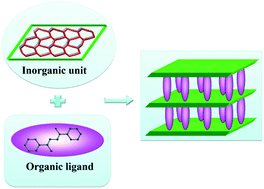Assembly of four d10-metal inorganic–organic hybrid coordination polymers based on bipyrazine imine-based ligand: Synthesis, crystal structures and luminescent properties†
Abstract
Four new inorganic–organic hybrid coordination

* Corresponding authors
a
Institute of Molecular and Crystal Engineering, School of Chemistry and Chemical Engineering, Henan University, Kaifeng, P. R. China
E-mail:
dangdb@henu.edu.cn, jyniu@henu.edu.cn
Fax: +86 378 3881589
Tel: +86 378 3881589
Four new inorganic–organic hybrid coordination

 Please wait while we load your content...
Something went wrong. Try again?
Please wait while we load your content...
Something went wrong. Try again?
Y. Bai, J. Wang, D. Dang, M. Li and J. Niu, CrystEngComm, 2012, 14, 1575 DOI: 10.1039/C1CE06030A
To request permission to reproduce material from this article, please go to the Copyright Clearance Center request page.
If you are an author contributing to an RSC publication, you do not need to request permission provided correct acknowledgement is given.
If you are the author of this article, you do not need to request permission to reproduce figures and diagrams provided correct acknowledgement is given. If you want to reproduce the whole article in a third-party publication (excluding your thesis/dissertation for which permission is not required) please go to the Copyright Clearance Center request page.
Read more about how to correctly acknowledge RSC content.
 Fetching data from CrossRef.
Fetching data from CrossRef.
This may take some time to load.
Loading related content
